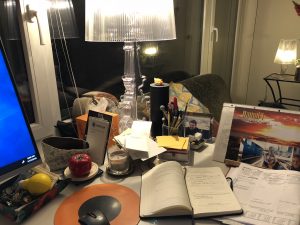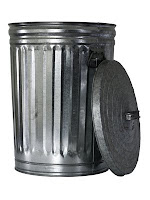It’s January again and I find myself compulsively clearing my desk and going through my cupboards and drawers. Reaching the bottom of piles of papers, looking in the backs of deep shelves and under things, I unroll tubes of flip chart papers, and sort through piles of “filing” that hasn’t yet been done. I archive five years of my GTD files of past projects, and test a huge collection of markers, retiring those that don’t work. I ask myself seriously how many of those conference bags I will use again in the future? And on and on.
I start with my office, then this urge spreads to other parts of my house – storage cupboards, camping equipment, clothes, Christmas decorations… it takes days, and weeks to look through, sort and triage everything. I do it carefully and thoughtfully. Marie Kondo would be proud. David Allen would smile. Eventually I collapse into my own thoughts – who needs all this stuff? Why do I keep so much stuff?
This annual clear out isn’t just rearranging and putting back into place systems that are there to corral the paper and loose items of life that find their way into our offices and living spaces. As I move through these places, I have my three-box system for things to keep, things to rehome and things to recycle/throw away. I am a frequent flyer at our local recycling centre, and practically have my own parking space at the Salvation Army. It pains me to put things into the throw away box. This continuous item-by-item decision-making is perhaps why it takes so long. This and the memories that all the items bring back when you are reaching the deep recesses of storage space and are trying to decide if you will keep something in your three ring circus of life for another year or send it out into the circular economy.
I imagine that for some people this process of clearing is easy and quick. I envy my friends and those de-cluttering experts in YouTube videos who can just look at something and immediately toss it, with no attachment. I can attribute deep ecological feelings to my agony at getting rid of things (this widget is after all still useful!) and to why I spend an inordinate amount of time thinking who could use it and where it could go next on its journey of ownership and use. (But paradoxically, these feelings aren’t always able to keep me from acquiring things in the first place.)
Ultimately it feels good to move things on. It clears up space on shelves and in cupboards, in filing cabinets and materials drawers that are now easier on the eye and mind, and provide the opening for new things. This new idea or project or hobby is now not just another thing to squeeze into an already crowded space. As the new year starts, this feels necessary yet it takes so much time, herculean effort and in some cases courage. In a thoughtful moment, I ask myself, do certain lifestyles and life situations make it more likely to keep things around? Do expats keep more that reminds them of home and family in far away places? Do parents keep more of their growing children’s things as they anticipate them leaving home? Do knowledge workers keep more of the physical as their work is often virtual? Do independent workers keep more evidence of their past work as their future work is not always certain?
Is being all of these things a recipe to keep way too much? Let me grab a cup of tea and sit down for a moment, but not too long, I have some new ideas for this year and I need the space…















